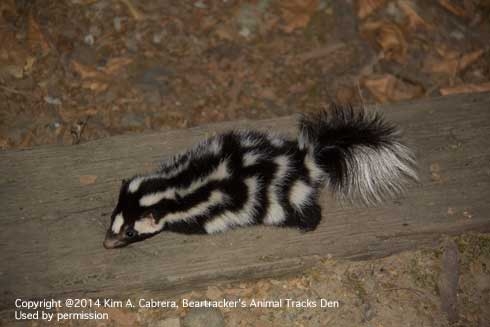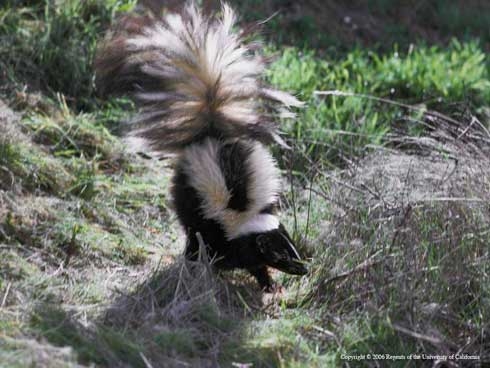Most people in California have had some experience with skunks, whether getting a whiff of their distinctive skunk scent in the air or having the unfortunate experience of a pet that's been sprayed.
Two skunk species call California home: the spotted skunk and the striped skunk. About half the size of a house cat, the striped skunk is mostly active at dawn, dusk and at night, but can be active during the daytime, especially in human-use areas; the spotted skunk rarely ventures outside during the daytime.
Skunks are attracted to residential areas due to the availability of food, water, and shelter and often den under decks, porches, or buildings. Most people never see the skunks that travel through their neighborhoods and yards. Barking dogs may be the first apparent sign of their presence, and the odor resulting from a skunk/dog confrontation provides positive evidence.
Skunks pose health risk problems because they are the most common carrier of rabies, a viral disease transmitted by the bite of an infected animal. In addition to rabies, skunks can also be carriers of other diseases such as leptospirosis, listeriosis, canine distemper, canine hepatitis, Q-fever, and tularemia.

Read more detailed information about skunk management and recommendations for how to get rid of skunk odor on your pet, in UC IPM's newly revised Skunks Pest Note by Dr. Roger Baldwin, a Cooperative Extension Specialist with the UC Davis Department of Wildlife, Fish, and Conservation Biology.
